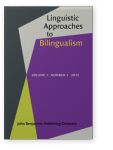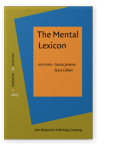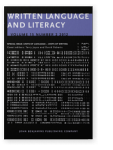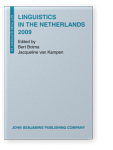Arina Banga
List of John Benjamins publications for which Arina Banga plays a role.
2015 Regional origin affects the interpretation of linking elements in spoken Dutch compounds The Mental Lexicon 10:2, pp. 165–185 | Article
In Dutch, the linking element en in compounds is often homophonous with the regular plural suffix -en. Both are pronounced as [ә], [әn] or [ṇ] in different regions of the Netherlands. As a consequence, speakers of standard Dutch may interpret linking en in spoken compounds as a plural marker. The… read more
2015
In standard Dutch, the plural suffix -en is homographic and homophonic with the linking suffix -en (boek+en “books”, boek+en+kast “bookcase”), both being pronounced as schwa. In Frisian, there is neither homography nor homophony (boek+en “books”, pronounced with syllabic nasal; boek+e+kast… read more
2013 Plurals as modifiers in Dutch and English noun-noun compounds express plurality in production The Mental Lexicon 8:1, pp. 53–74 | Article
The present study investigates the relation between conceptual plurality and the occurrence of a plural morpheme in novel Dutch and English noun-noun compounds. Using a picture-naming task, we compared the naming responses of native Dutch speakers and native English speakers to pictures depicting… read more
2012 How subtle differences in orthography influence conceptual interpretation Units of Language – Units of Writing, Joyce, Terry and David Roberts (eds.), pp. 185–208 | Article
The present study investigates linguistic relativity. The units of writing investigated are e and en, which are used to represent units of language in Dutch, Frisian, and Afrikaans. Dutch has homographic forms in the plural suffix -en and the linking element of noun-noun compounds en. Frisian does… read more
2009 Some implicatures reveal semantic differences Linguistics in the Netherlands 2009, Botma, Bert and Jacqueline van Kampen (eds.), pp. 1–13 | Article




